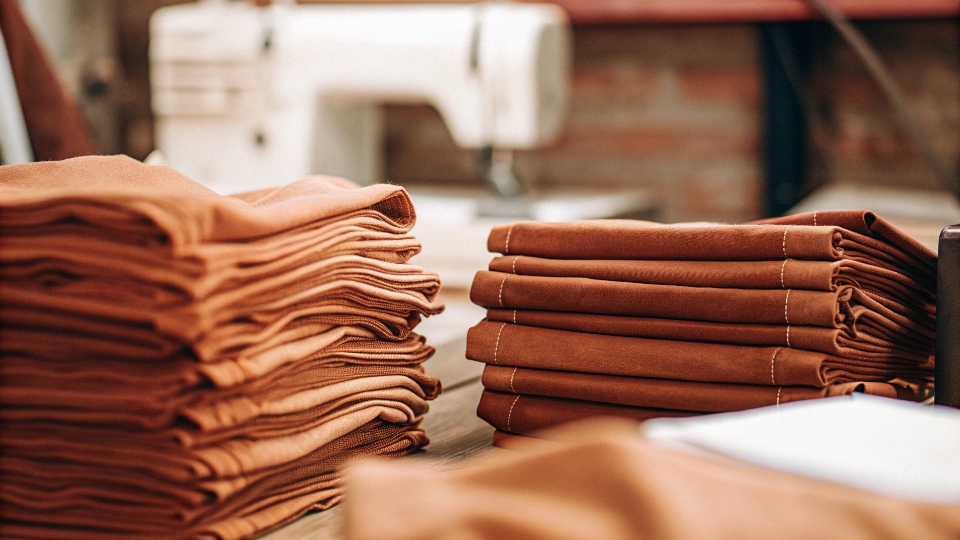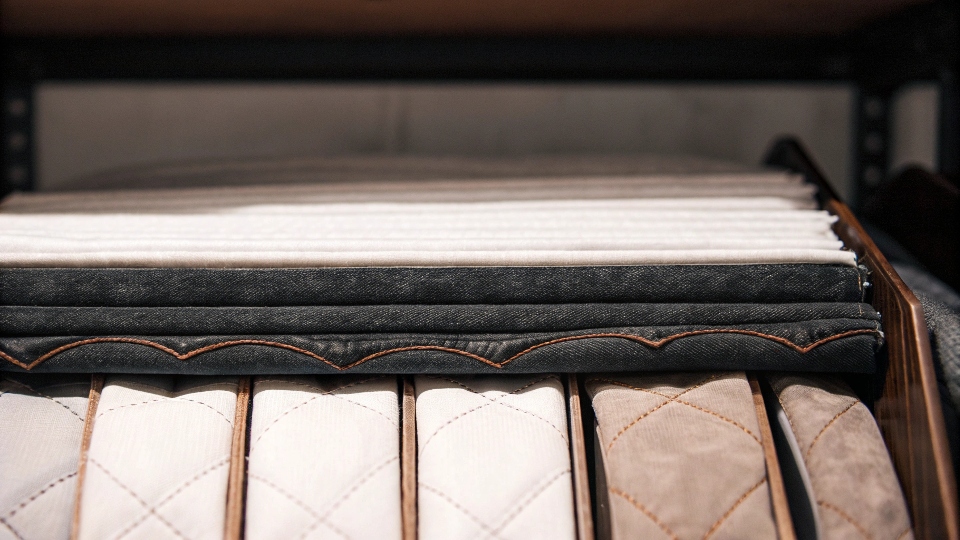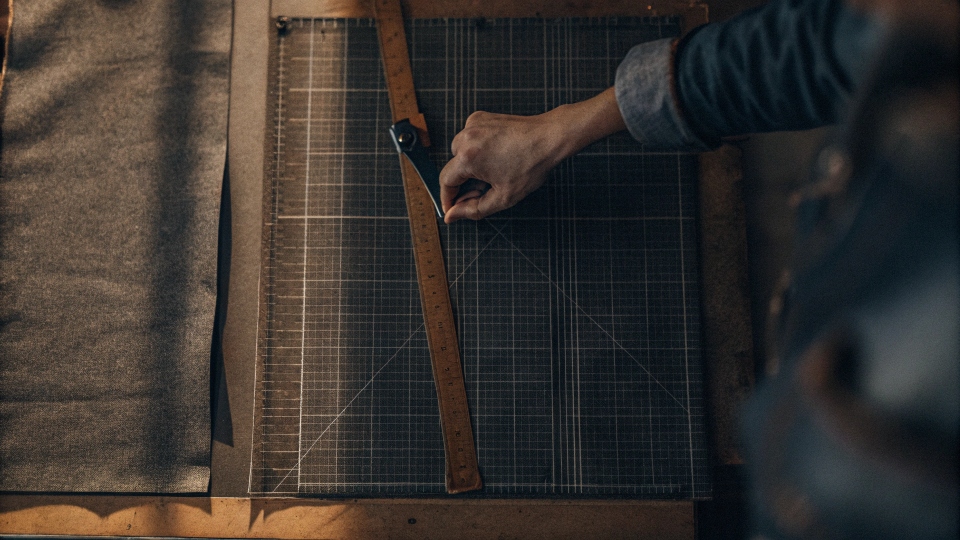You have a growing pile of old jeans1 that you can't bear to throw away. They hold too many memories to end up in a landfill, but they're too worn to wear.
To make a jean quilt2, you deconstruct old jeans3 into usable fabric, cut uniform squares, and sew them together4. You arrange the squares into a pattern, stitch them into rows, and then sew the rows together to form the quilt top.
Seeing old jeans get a new life is one of the most satisfying things for me. At my factory, DiZNEW, denim is our world. We work with tons of it every single day.
While we focus on creating new, perfect garments for designers like Dean, I have a deep respect for the entire lifecycle of a pair of jeans.
Denim is one of the most durable fabrics on the planet, which is why it's perfect for a second life as a sturdy, comforting quilt that can last for generations. It’s a project that honors the material and the memories woven into it.
How many pairs of jeans do you need to make a jean quilt?
You're excited to start this project but have no idea how much material you need. You're worried you'll cut up all your jeans only to find you're still halfway short of a finished quilt.
For a simple throw-sized quilt (about 50 x 60 inches), you will need approximately 6 to 8 pairs of adult-sized jeans. The final number really depends on the size of the jeans you're using and the size of the squares you plan to cut.
The best way to figure this out is with a little planning. First, decide on the final dimensions of your quilt. Then, choose the size of your finished squares, for example, 6x6 inches. Remember to add a seam allowance—a half-inch on all sides is standard.
This means you need to cut 7x7 inch squares. From one pair of large adult jeans, you can usually harvest about ten to twelve 7x7 inch squares, mostly from the legs.
So, for a throw quilt that's roughly 9 squares wide by 10 squares long (90 squares total), you'd need around 8 or 9 pairs of jeans. It’s always better to have one or two extra pairs just in case some sections are too worn to use.
Estimated Jeans Needed for Quilt Sizes
| Quilt Size (Approx.) | Dimensions | Squares Needed (6" finished) | Estimated Jeans |
|---|---|---|---|
| Crib | 36" x 52" | 6 x 9 = 54 squares | 4-5 pairs |
| Throw | 50" x 60" | 9 x 10 = 90 squares | 7-9 pairs |
| Twin | 70" x 90" | 12 x 15 = 180 squares | 15-18 pairs |
| Queen | 90" x 108" | 15 x 18 = 270 squares | 22-27 pairs |
Do you put batting in a jean quilt?
You know that denim is already a heavy and warm fabric. You're wondering if adding batting is necessary, or if it will just make the quilt incredibly heavy and stiff.
Using batting in a jean quilt5 is optional, but it's recommended for a warmer, more traditional quilt. Since denim is already thick, choose a thin, low-loft cotton batting to add softness and warmth without creating too much bulk or weight.
This really comes down to personal preference. If you want your creation to feel more like a heavy blanket or a coverlet, you can definitely skip the batting.
Just placing a soft backing, like flannel, against the denim top will work fine. However, if you want that classic, cozy quilt feeling, a layer of batting is the way to go.
The batting helps to even out the bulky seams on the back, gives the quilt a nicer drape, and adds a significant amount of warmth. In my work, we often add thin interlinings to denim jackets to give them structure without making them rigid.
Think of low-loft batting the same way—it adds function and improves the final feel without overpowering the main material. I suggest a 100% cotton batting as it breathes well and complements the natural cotton fibers of the denim.
What is the best backing for a denim quilt?
You've spent all this time piecing together the denim top, and now you need to choose a backing. You want something that feels good against the skin but is strong enough to handle the heavy denim.
The best backing for a denim quilt is a soft but durable fabric like flannel. Flannel is a very popular choice because it's soft, warm, and sturdy, and its cozy texture pairs perfectly with the ruggedness of denim.
While you have a few good options, flannel is the top contender for a reason. Its softness provides a wonderful contrast to the tougher denim front, making the quilt extra inviting.
It's also easy to work with and machine washable, just like the denim itself. Another great choice is fleece, which is also incredibly soft and warm. Fleece won't fray, but it can sometimes be a bit slippery to sew.
You could also use standard quilting cotton, which comes in thousands of colors and patterns, allowing you to add a fun design to the back. However, quilting cotton is much lighter and less cozy than flannel.
My advice is to pre-wash any backing fabric you choose, especially flannel, as it tends to shrink. This ensures your finished quilt will lay flat and look great for years.
How do you prepare and cut the denim squares?
You have your stack of old jeans, but you're hesitating, scissors in hand. You are not sure how to break them down efficiently to get the best-looking and most consistent squares for your project.
First, wash and dry all the jeans thoroughly. Then, use strong scissors to deconstruct them by cutting away thick seams, waistbands, zippers, and pockets. The flat, wide fabric from the legs is the best part to use for your quilt squares.
Precision at this stage is the key to a successful quilt. After washing, take a pair of jeans and start by cutting off the bottom hem. Then, cut straight up the inseam and the outer seam of both legs.
This allows you to open each leg into a long, flat piece of fabric. From here, you can trim away any areas that are overly worn or stained. The absolute best tools for cutting the squares are a rotary cutter6, a self-healing mat, and a clear acrylic quilting ruler.
These tools allow you to cut multiple layers at once and ensure every single square is perfectly identical. In my factory, the cutting process is the foundation of a quality garment.
It’s the exact same principle here: perfectly uniform pieces make the sewing and assembly process much smoother and deliver a professional-looking result.
Conclusion
Making a jean quilt is a rewarding way to preserve memories. Plan how many jeans you need, use a thin batting and soft flannel backing, and be precise when cutting your squares.
-
Explore creative ways to repurpose old jeans and give them a new life. ↩
-
Learn the step-by-step process of transforming old jeans into a beautiful quilt. ↩
-
Find tips on efficiently breaking down jeans for various DIY projects. ↩
-
Explore sewing methods that ensure a strong and beautiful quilt. ↩
-
Understand the role of batting in quilts and whether to include it. ↩
-
Learn how to use a rotary cutter effectively for clean and accurate cuts. ↩











